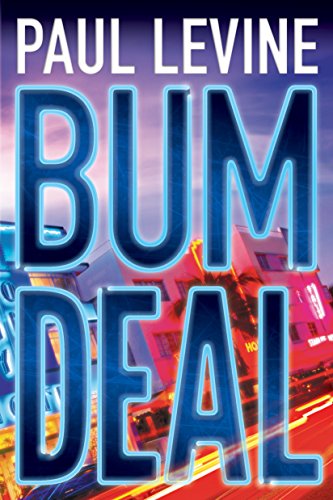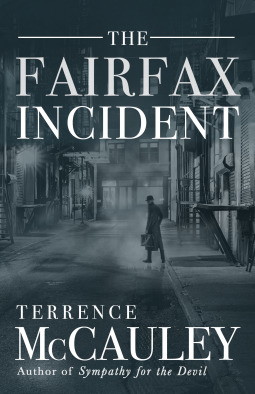
My guest this week on The Scariest Part is author Paul Levine, whose new novel in the Jake Lassiter series is Bum Deal. Here is the publisher’s description:
“They don’t call us sharks for our ability to swim.” — Jake Lassiter
Second-string linebacker turned disillusioned defense attorney Jake Lassiter finally switches teams. Appointed special prosecutor in a high-profile murder case, he vows to take down a prominent surgeon accused of killing his wife. There’s just one problem…or maybe three: no evidence, no witness, and no body.
But Lassiter’s used to fighting impossible battles on the gridiron and in court. After all, he’s not totally burned-out — just a little scorched.
Standing in Lassiter’s way are the defense lawyers: slick-talking Steve Solomon and blueblood Victoria Lord, who would love to beat their old mentor in court. Not to mention the specter of CTE, the lethal brain disease Lassiter may have contracted banging heads in the NFL. Drained of his mental edge just when he needs it most, Lassiter faces the possibility of losing the case — and his life — in court.
And now, let’s hear what the scariest part was for Paul Levine:
I suffer from an ailment I call “HBR,” Hypochondria by Research. As a result, I live in fear of brain damage.
Here’s why. I’ve been reading everything I can find about Chronic Traumatic Encephalopathy (CTE), the vicious, degenerative brain disease that is killing former professional football players.
In Bum Deal, linebacker-turned-lawyer Jake Lassiter, my fictional hero for the last 28 years, suffers symptoms of CTE. Here’s what he says about the disease: “CTE is to the NFL what black lung is to coal mining, the inescapable industrial disease that keeps on giving, and I might be one of its victims.”
Unlike Lassiter, I didn’t play college or pro football. Sure, like teenage boys of a certain era, I played sandlot tackle football without a helmet. So I’d gotten my bell rung lots of times. And I was beaned by a baseball more than once in the days before batting helmets. Then there were several head-to-head collisions under the backboard playing varsity basketball in high school.
But let’s go back even farther in time. When I was a kid, I’d watch professional wrestling on the black-and-white Philco. In those long-gone days (circa 1960), there were a horde of colorful characters in the ring with memorable names. Abdullah the Butcher, Killer Kowalski, Dick the Bruiser, The Sheik, and of course, Gorgeous George were headliners.
My favorite was a mountain of a man — 6′ 6″ tall, 270 pounds — who called himself Bobo Brazil. (He was born “Houston Harris,” which wouldn’t have been a bad ring name, either).
Brazil’s deadly move was a vicious head butt he called the “Coco-Butt.”
“Look out! Here comes Bobo’s Coco-Butt!”
Brazil would grab his opponent around the neck and slam his own forehead into the man’s head, kr-ack! The guy would spin dizzily in circles and fall dreamily to the mat, feigning unconsciousness. We didn’t know the sport was as choreographed as “Swan Lake,” and this looked real to a twelve-year-old. Still does.
After watching wrestling on the grainy Philco, the neighborhood kids would take on the persona of their favorite wrestlers and battle in the backyard. I was Bobo Brazil, and I’d head butt my opponents until my vision darkened into a night sky filled with shooting stars, my ears ringing like the bells of Notre Dame. Did I suffer concussions? I don’t know, but we’ve since learned that sub-concussive injuries — especially in children — can lead to later brain damage.
Flash forward five decades. One of my close friends, a Miami lawyer named Don Russo, died of a degenerative brain disease. He had been a small, speedy, fearless wide receiver at the University of Miami. Running pass patterns over the middle, he’d been knocked around like a pinball by linebackers 50 pounds heavier. After short stints with the San Diego Chargers and Miami Dolphins, he went to law school and began playing rugby on an international level for the next 25 years. How many blows to the head did he take over all that time? Hundreds? Thousands? To my thinking, there was no doubt: sports killed my friend.
Doing research for Bum Deal, I was astonished at the pace of new and frightening discoveries about traumatic brain injuries suffered by athletes. The headlines alone were scary:
“I’m the Wife of a Former NFL Player. Football Destroyed His Mind.” – New York Times
“Not Safe for Children? Football’s Leaders Make Drastic Changes to Youth Game.” – New York Times
“Could Football Ever End?” – Wall Street Journal
“Playing Tackle Football Before 12 Is Tied to Brain Problems Later.” – New York Times
I read these articles and many others, including the grimmest report yet, regarding autopsies of former pro football players: “111 NFL Brains: All But One Had CTE.”
Somewhere in the process of learning more than I wanted to know about traumatic brain injuries, my ears began to ring. Okay, that’s tinnitus, nothing unusual for a man my age. And sometimes I can’t remember the name of one of my favorite actors or the title of one of my favorite movies. Or the name of an author I admire and have met numerous times. And I seem more irritable than usual, and that’s saying a lot.
“You’re simply aging,” a physician tells me. “Your brain cells are dying at a normal rate.”
Normal rate! I want to learn new things, not forget old ones.
As for Lassiter, in Bum Deal, he makes light of his situation, something a shrink might call denial or avoidance.
“Jake, when are you going to get those neurological tests?”
“Stop worrying. I’m not drain bamaged.”
My thoughts turn to Bobo Brazil. He wrestled for 42 years — until he was 68! — and made it to 73 before dying of a stroke. That’s a lot of Coco-Butts. I doubt he ever worried about gremlins eating away at his brain cells. So I’m vowing to find something else to fear. Have you read about all the mercury they’re finding in tuna?
Bum Deal: Amazon / Barnes & Noble / Powell’s / IndieBound
Paul Levine: Website / Facebook / Twitter / Blog / Newsletter Sign-Up
Paul Levine is the author of the “Jake Lassiter” and “Solomon vs. Lord” novels. Bum Deal is his latest work.



